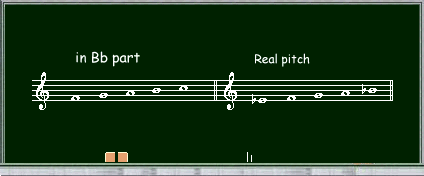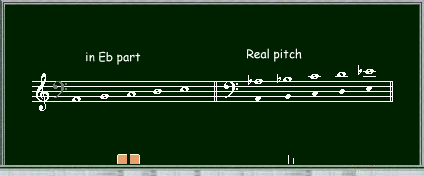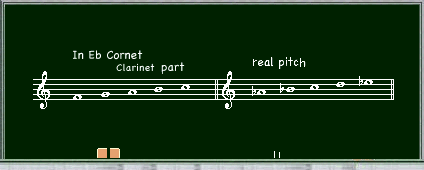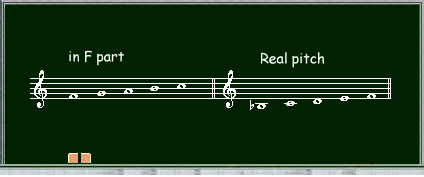This is not a structural classification of the instrument, but rather a convenience for playing. A tradition from the time when brass instruments (trumpets and horns) did not have pistons and could only produce natural harmonics (C, G, C, E, G... of the key)
 . And for woodwind instruments, the music is transposed to allow flexibility, so that the same fingering can be used to play several instruments family(for example, E-flat, B-flat, alto and bass clarinets or Soprano, alto, Tenor, Bariton Saxophone).
. And for woodwind instruments, the music is transposed to allow flexibility, so that the same fingering can be used to play several instruments family(for example, E-flat, B-flat, alto and bass clarinets or Soprano, alto, Tenor, Bariton Saxophone). Since the days of its predecessor, the sackbut, the trombone has been treated as a real pitch instrument since ancient times (with the exception of its use in British brass bands).
For example, the fingering for the lowest note C
 on a soprano recorder (holding down all fingers) is memorized as F
on a soprano recorder (holding down all fingers) is memorized as F on an alto recorder. This is the concept of a real pitch instrument, and the concept of a transposing instrument is that soprano and alto players learn the same fingering, and the sheet music for alto is written a fifth higher than the real pitch (F to C).
on an alto recorder. This is the concept of a real pitch instrument, and the concept of a transposing instrument is that soprano and alto players learn the same fingering, and the sheet music for alto is written a fifth higher than the real pitch (F to C). There is no doubt that the existence of transposing instruments and real pitch instruments makes band instruction difficult (or at least makes it seem difficult). Even if you look at a band score for the first time, it is difficult to understand the actual sound, and you need to know transposition to check the sound on a piano, etc.
Some people who teach wind bands make their own scores in real pitch, but I think it is time-consuming.
Bb clarinets and trumpets produce a note one step (major second) lower than the score.

Eb alto saxophones and alto horns produce a note a major sixth lower than the score.
The part score for "in Eb" in treble clef can be read as it is in bass clef, and by adding three flats to the key signature, it can be converted to actual pitch (an octave higher).

Even though it's the same in Eb, the Eb clarinet and Eb cornet will produce a minor third higher than the score.

The F horn will produce a fifth (perfect fifth) lower than the score.

These days, there are keyboards that can be easily transposed, so if you use them to set the key, you can play each part as is to produce the pitch of that instrument.